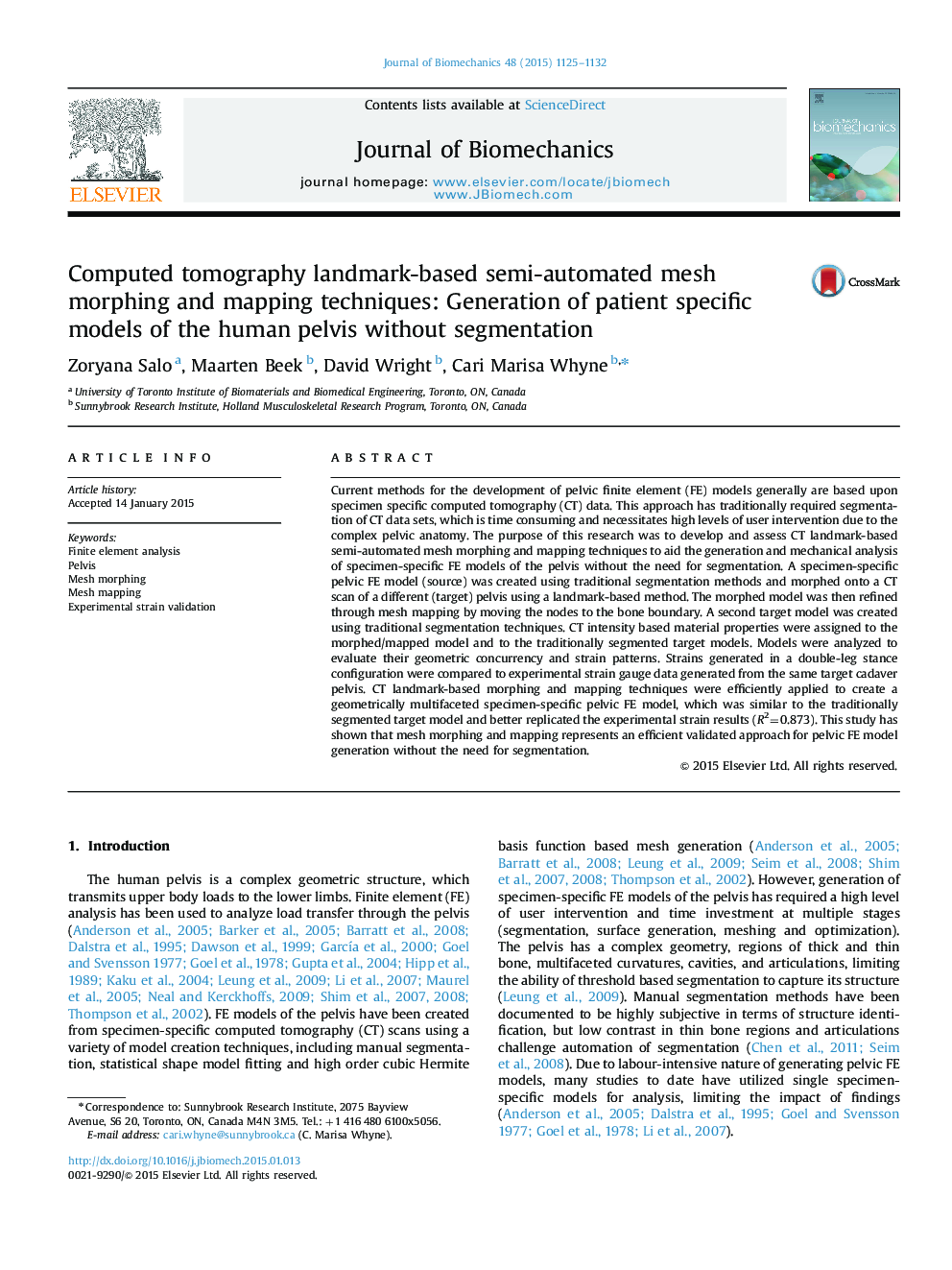| کد مقاله | کد نشریه | سال انتشار | مقاله انگلیسی | نسخه تمام متن |
|---|---|---|---|---|
| 872000 | 910217 | 2015 | 8 صفحه PDF | دانلود رایگان |
Current methods for the development of pelvic finite element (FE) models generally are based upon specimen specific computed tomography (CT) data. This approach has traditionally required segmentation of CT data sets, which is time consuming and necessitates high levels of user intervention due to the complex pelvic anatomy. The purpose of this research was to develop and assess CT landmark-based semi-automated mesh morphing and mapping techniques to aid the generation and mechanical analysis of specimen-specific FE models of the pelvis without the need for segmentation. A specimen-specific pelvic FE model (source) was created using traditional segmentation methods and morphed onto a CT scan of a different (target) pelvis using a landmark-based method. The morphed model was then refined through mesh mapping by moving the nodes to the bone boundary. A second target model was created using traditional segmentation techniques. CT intensity based material properties were assigned to the morphed/mapped model and to the traditionally segmented target models. Models were analyzed to evaluate their geometric concurrency and strain patterns. Strains generated in a double-leg stance configuration were compared to experimental strain gauge data generated from the same target cadaver pelvis. CT landmark-based morphing and mapping techniques were efficiently applied to create a geometrically multifaceted specimen-specific pelvic FE model, which was similar to the traditionally segmented target model and better replicated the experimental strain results (R2=0.873). This study has shown that mesh morphing and mapping represents an efficient validated approach for pelvic FE model generation without the need for segmentation.
Journal: Journal of Biomechanics - Volume 48, Issue 6, 13 April 2015, Pages 1125–1132
